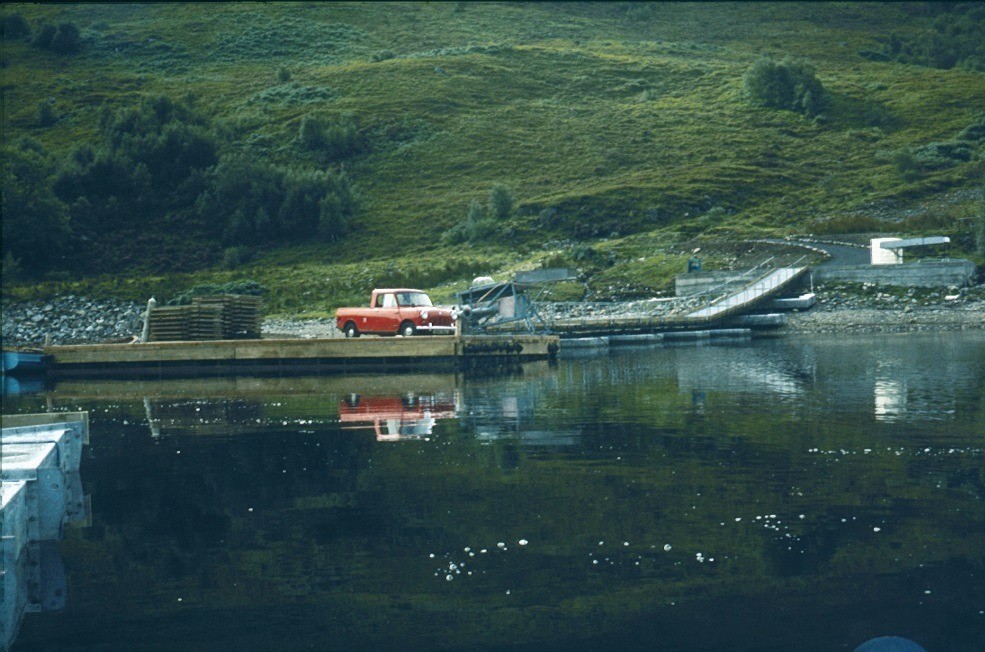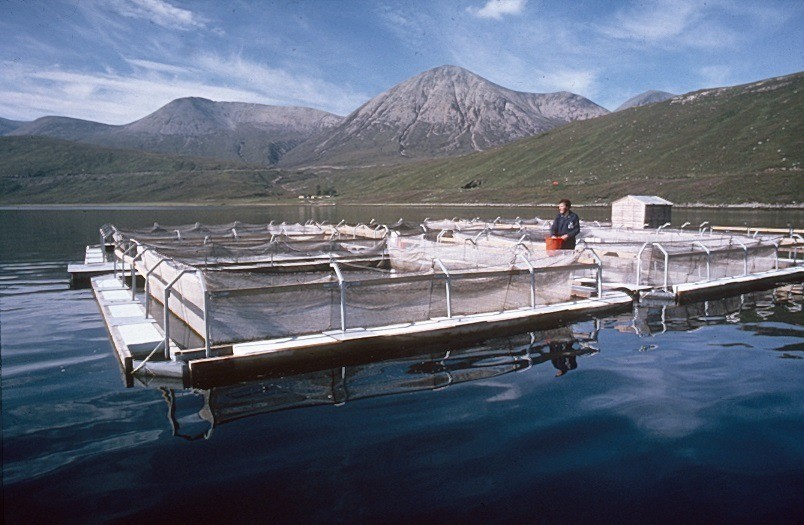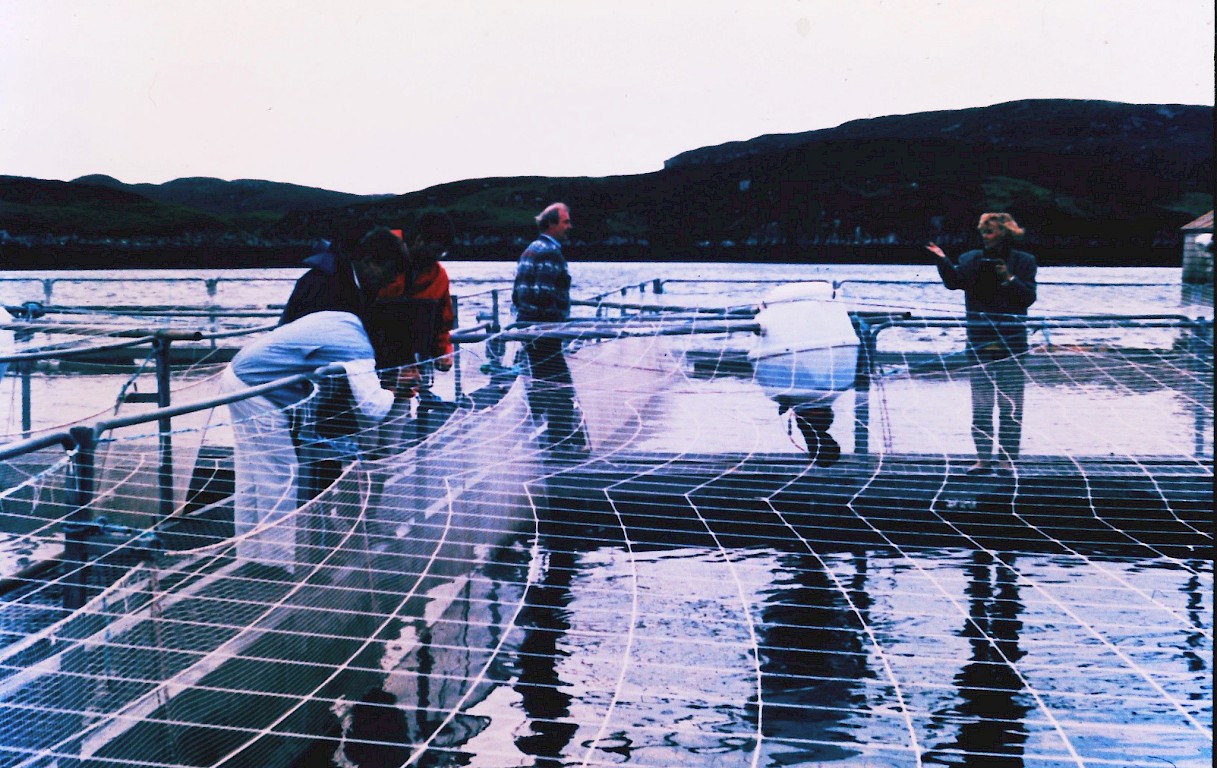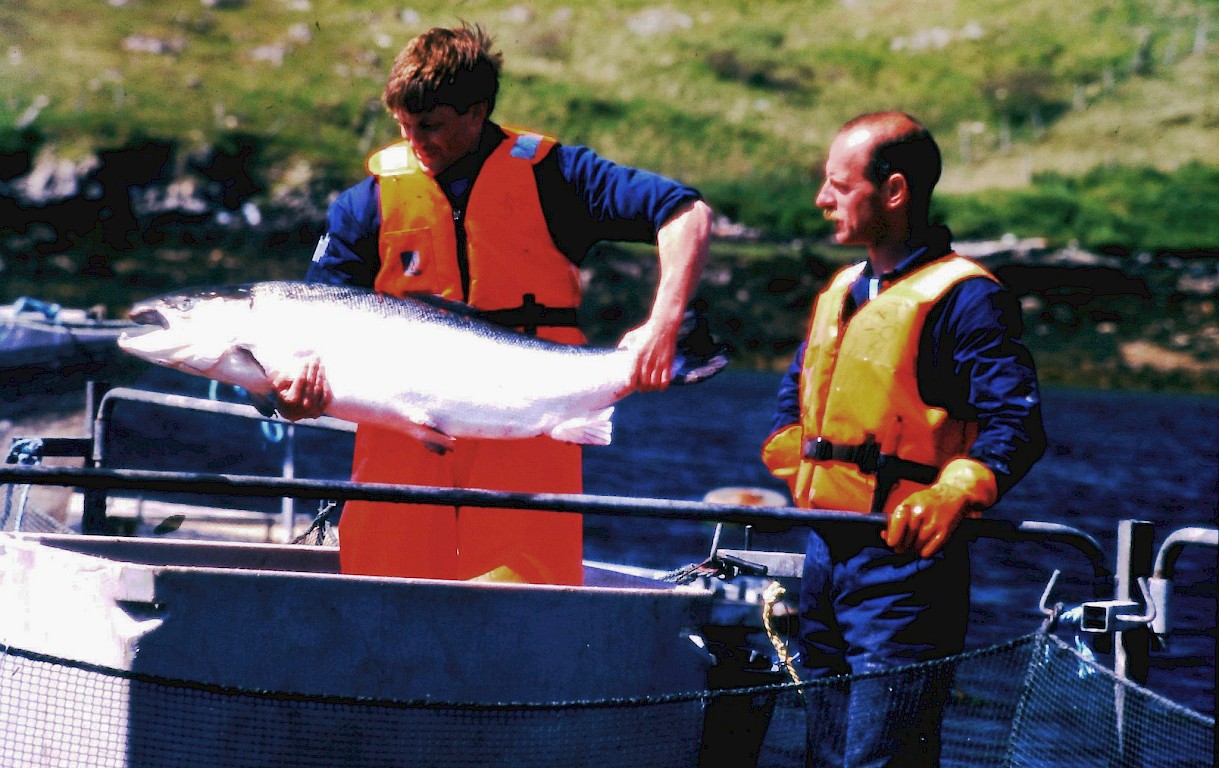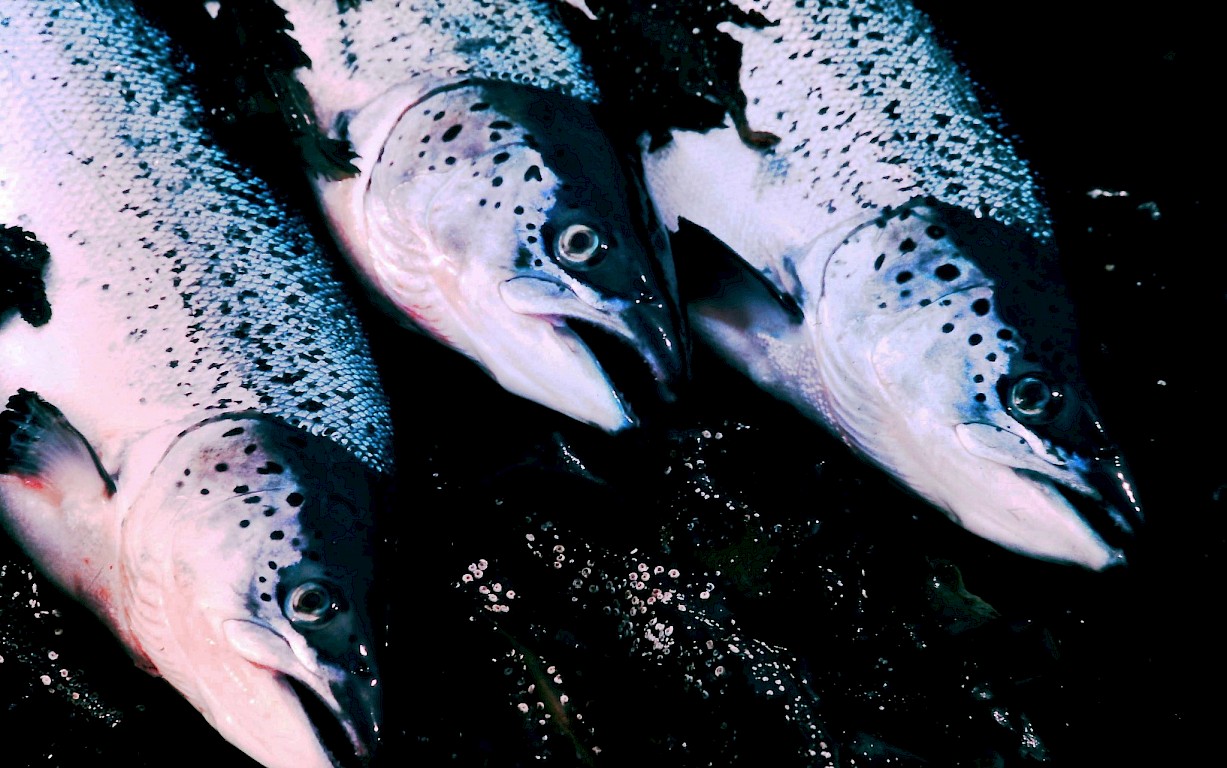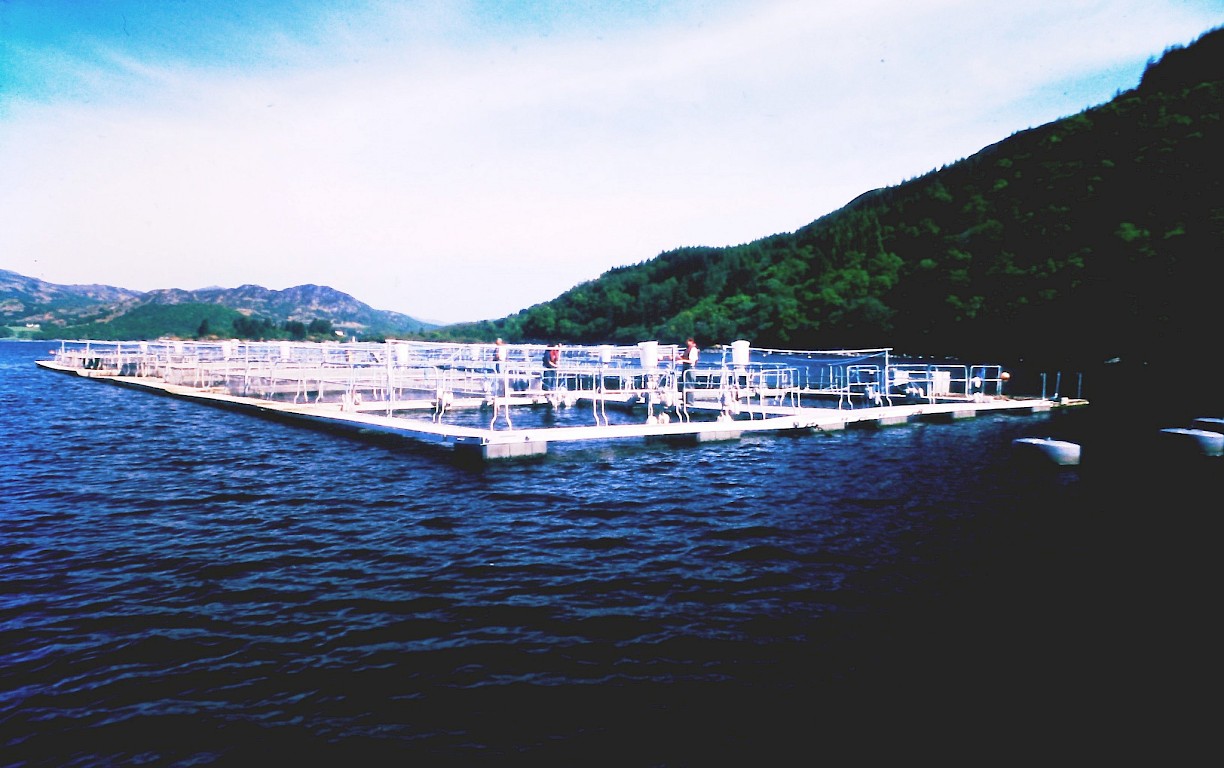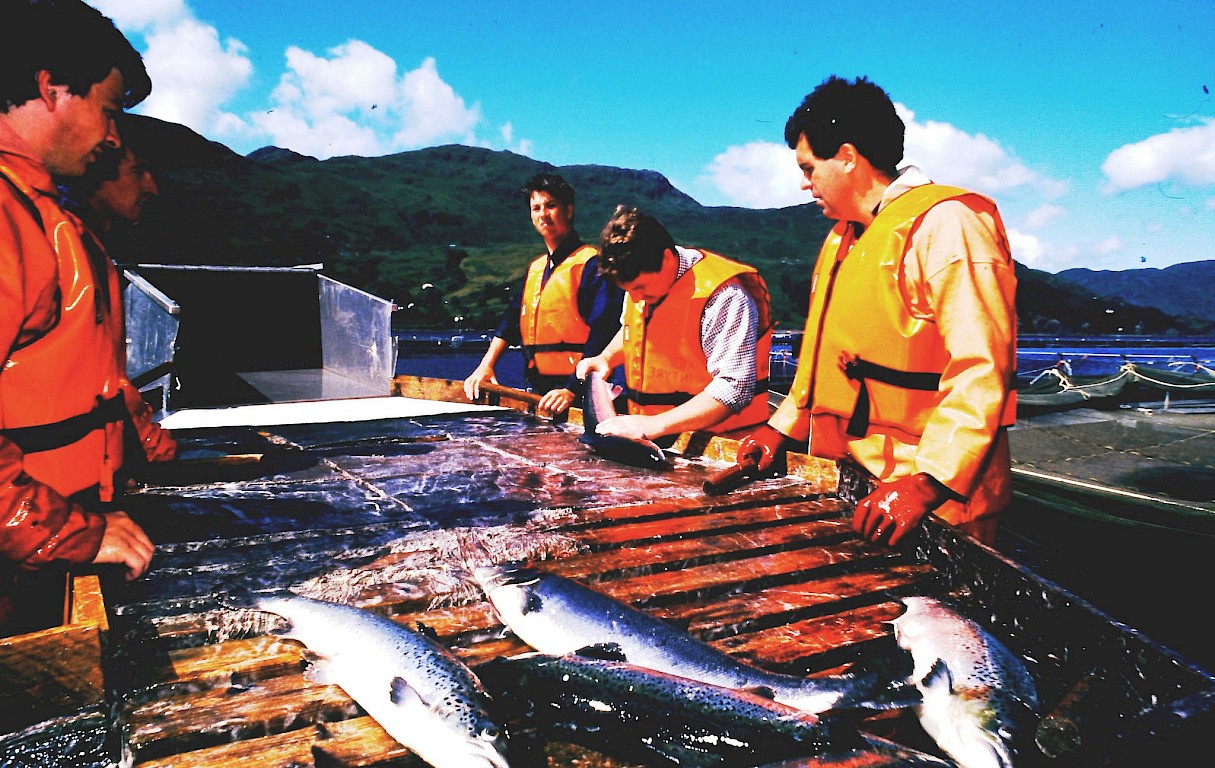This accelerated during the Victorian era with eggs and smolts (juvenile fish) cultivated to restock rivers. By 1890 there were 18 hatcheries operating in Scotland.
The ability to rear healthy Atlantic salmon to maturity however took another 80 years. Scottish ingenuity saw the first marine fish farm established at Loch Ailort in Inverness-shire in 1965.
After initially being stocked with trout the operators soon switched to salmon with the first commercial harvest in 1971 resulting in 14 tonnes of fresh farmed Scottish salmon being sold.
As experience grew and increased funds became available, a number of businesses got involved, leading to a rapid growth in both the number of farms but also in the numbers of fish being harvested. 600 tonnes in 1980 became 115,000 tonnes by 1998 and 189,000 tonnes in 2017.
Over the last fifty years the Scottish salmon farming sector has not only become the fish of choice for British shoppers and the UK's number one food export, it is also a major provider of jobs with 2,300 people directly employed with a further 10,000 people working in the supply chain.
Not bad for a farming sector with a geographical footprint just half the size of Edinburgh airport, or two 18-hole golf courses.
From these early achievements, the salmon farming sector has strived to produce high-quality food while working with its neighbours so that everyone can benefit from Scotland’s natural resources.

